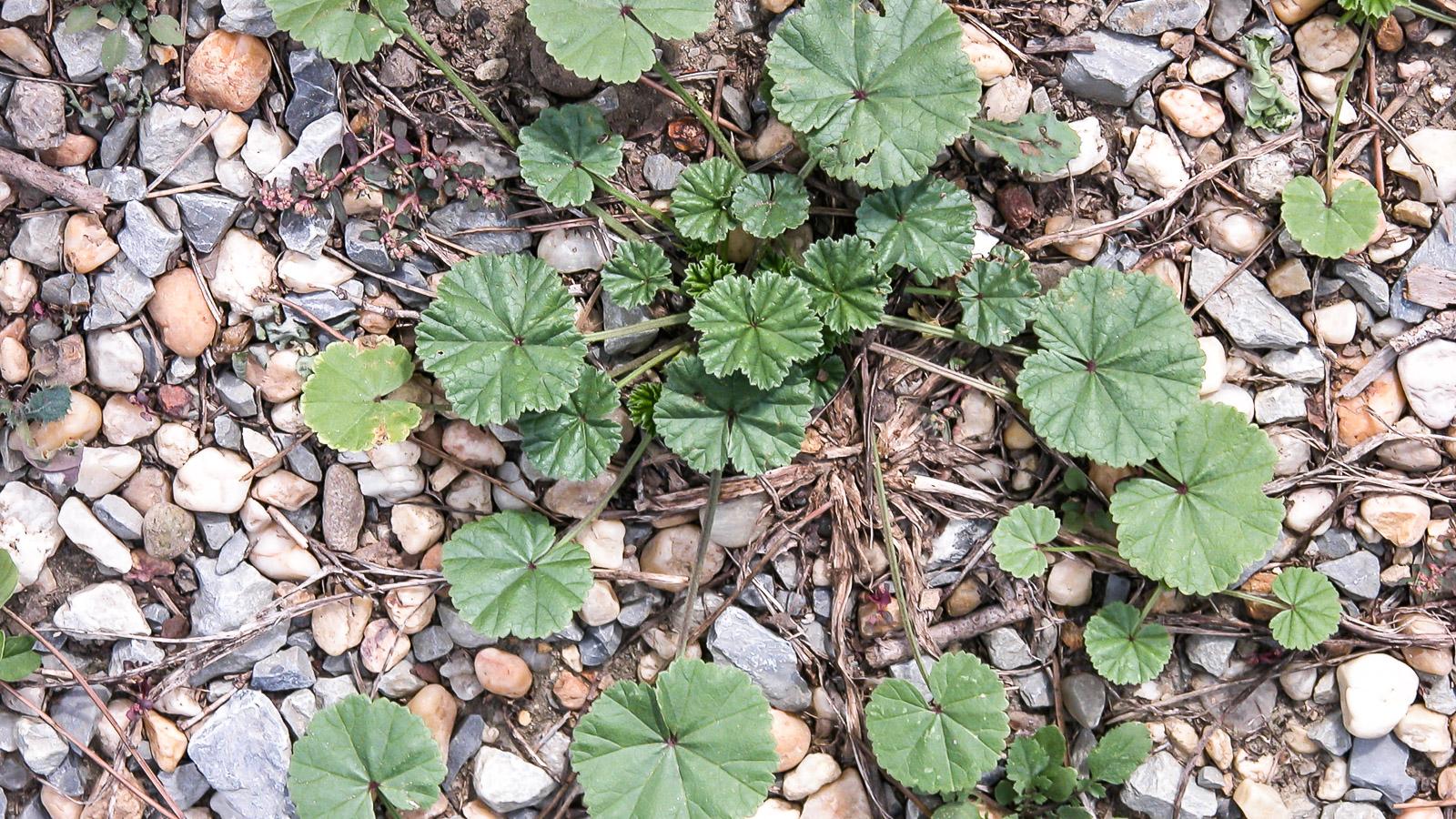General description
Life cycle: annual or biennial
Growth habit: grows up to 1 ft. high, leaves alternate, rounded, palmately veined with toothed margins, on long petioles
Reproduction: reproduces by seed; flowers 5-petaled, pale lavender to white; button-like fruit similar to hollyhock
Conditions that favor growth: low maintenance turf areas, landscapes, and nursery crops
Management in lawns
Lawn care practices
Maintain healthy, dense turf that can compete and prevent weed establishment. Raise mowing height to 3-4 inches, test soil for pH, and fertilize according to University of Maryland Extension recommendations.
Mechanical management
Hand pulling or using an appropriate weeding tool are the primary means of mechanical weed control in lawns. This is a viable option at the beginning of an infestation and on young weeds.
Manage Weeds Without Chemicals
Chemical treatment in lawns
If you choose this option, spot treat weeds with a liquid, selective, postemergent, broadleaf weed killer applied when weeds are actively growing. Look for a product with one or more of the following active ingredients: 2, 4-D, MCPP (mecoprop), Dicamba*, or Triclopyr.
*Do not spray herbicides containing dicamba over the root zone of trees and shrubs. Roots can absorb the product possibly causing plant damage. Refer to the product label for precautions.
